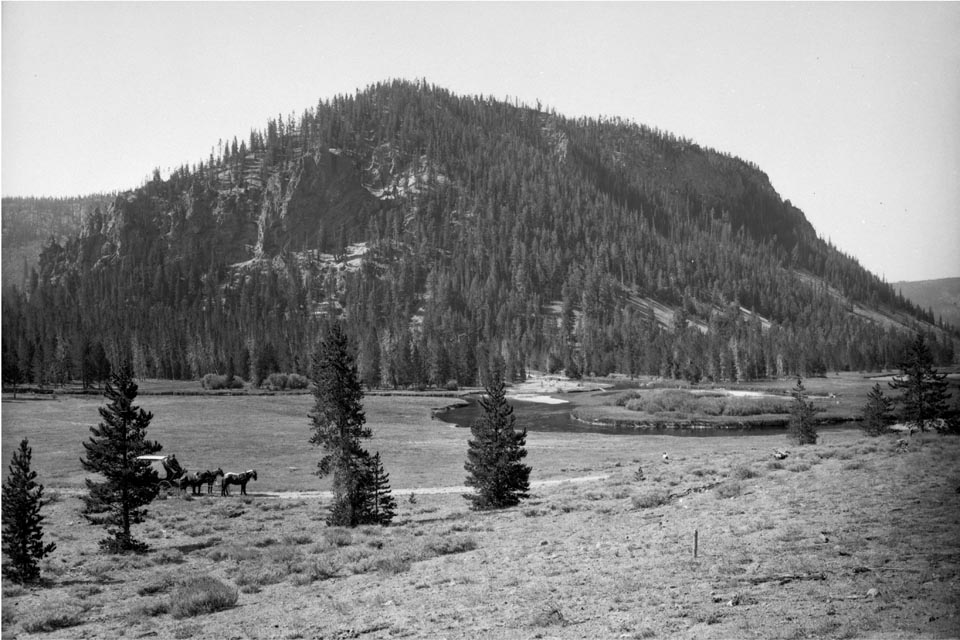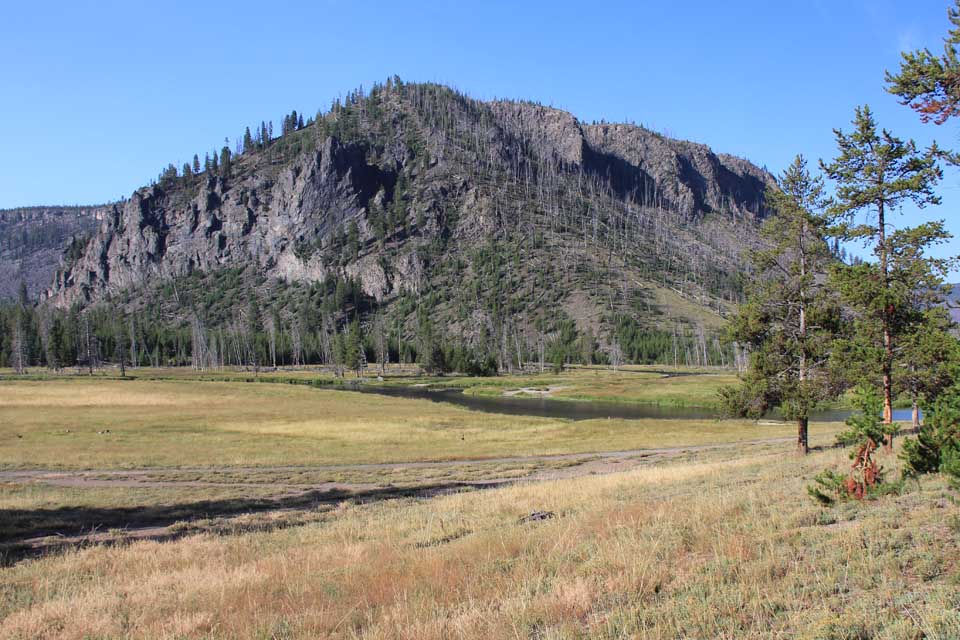Past Human Use of the Upper Madison
The Madison River canyon provides easy access from the west to the geysers and other marvels of the Yellowstone plateau. The defile was an obvious route for Shoshone peoples, and the junction was visited routinely by the early fur trappers. John Coulter likely passed near here in 1807 on his epic journey from a fort on Yellowstone at the mouth of the Bighorn River. Alexander Ross of the Hudson’s Bay Company led a brigade through the area in 1824 and was likely the first to document the occurrence of the geysers: “Saturday 24 (April)- We crossed beyond the Boiling Fountains. The snow is knee deep half the people are snow-blind from sun glare.” A few miles north of Madison Junction, near Beaver Lake below the Obsidian Cliffs, early park road builders discovered an old cache of iron traps, similar those used by the HBC. In the latter 1820s through the 1830s, the area was likely visited routinely by the American trappers. Joe Meeks, Daniel Potts, Johnson Gardner, Warren Fergus, Osbourne Russell, and of course Jim Bridger are all mountain men that passed by or near to Madison Junction. Their stories of geysers and boiling springs excited all Americans, and eventually stimulated government funded military and geological expeditions to visit this legendary country. 1
Myths of Parks
National parks are popularly described as “America’s best idea” and as with any great concept, the history of how and where the concept arose for Yellowstone, the United States’ first national park, has become mythical. A favorite story is that the proposal for a national park was conceived by an idealistic group of conservationists gathered around a campfire at Madison Junction in the evening shadows below the small peak known today as National Park Mountain. Historian Aubrey Haines sifted through many stories and documents that led to the parks establishment by President Ulysees Grant in 1872. Not surprisingly, the story is not so altruistic. A more reasonable explanation is that the political motivations that led to the national government’s establishment of Yellowstone are similar to those that led the Canadian government to establish Banff a few years later. Large national railroad companies (Northern Pacific and Canadian Pacific) wanted to protect public lands from ad hoc private development so that they could provide a monopolized transportation and service system for throngs of tourists. This partnership between government and commercial interests was an incredible success. It helped finance the railroads, and gave us the legacy of national park systems both countries enjoy today, and have helped develop world-wide. 2
Another myth is one that is more damaging than beneficial. It is often deeply engrained in park management that national parks are “naturally regulated” and essentially protect areas that are unaltered by human presence, either in the past or currently. Subtle effects of implementing this idea can, ironically, be seen in the repeat photographs of National Park Mountain and Madison Junction. Look at the tall willows along the river in the late 1800s photograph. By 2010 these have disappeared, victims of intensive browsing by elk and bison, now unhunted by native peoples, or predators who are displaced by crowds of modern visitors. Even more subtly visible are the burned snags around the meadow in the 1800s, likely caused by low intensity fires lit by native Americans or early European visitors. However, we can see in the 2014 photo that the massive 1988 midsummer fire incinerated most the trees on the mountain, but failed to burn many trees near the meadow. This “reversed” pattern of modern burning is common near meadows that are now heavily grazed, and not frequently human-ignited in spring or fall seasons when neighboring forests are not flammable. The adjacent forests are now burned in large mid-summer fires, but the meadows are often unburned due to intense ungulate grazing.3
Map and Footnotes
- Haines, Aubrey L. The Yellowstone Story: A History of our First National Park. Volume 1. Boulder: University Press of Colorado. 1996. Pp: 35-59 ↩
- Haynes, Yellowstone Story, Vol. 1; Marty, S. A Grand and Fabulous Notion: The First Century of Canada’s Parks. Ottawa: Canadian Government Publication Centre, 1984. ↩
- Kay, C. E. “Yellowstone’s Northern Elk Herd: A Critical Evaluation of the ‘Natural Regulation’ Paradigm.” Ph.D. diss., Utah State University, 1990; Kay, C. E., and C. A. White. “Long-Term Ecosystem States and Processes in the Central Canadian Rockies: A New Perspective on Ecological Integrity and Ecosystem Management.” George Wright Society Annual Conference on Research and Resources in Parks and on Protected Lands 8 (1995): 119–32. ↩

